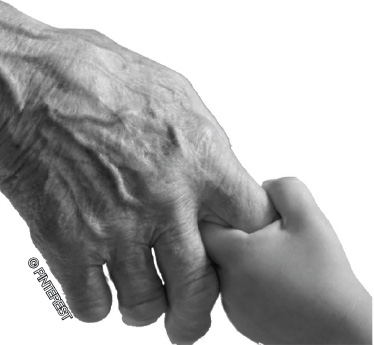The International Monetary Fund (IMF) warned that Korea could go through Japan’s ‘lost decades’. To avoid prolonged economic woes like Japan’s ‘lost decades’, the IMF urged Korea to expedite the restructuring of nonviable firms and the structural reform of the labor market.
Japan’s social phenomena that arose during the lost decades are similar to Korea’s recent social phenomena, and some of those Korean phenomena are appearing even faster than Japan’s.
Japan’s low fertility shock started in 1989 with a birth rate 1.57 children per a woman. The drop in birth rate continued for 20 years. According to the World Bank’s statistics, Japan’s birth rate in 2015 was 1.42. Starting from 1995, Japan’s working age population (number of people aged 15-64) continued to decrease over 20 years. Eventually, Japan’s working age population dropped to 60.8%. According to Statistics Korea, Korea’s birth rate was 1.24 in 2015. Also, Statistics Korea announced that Korea’s working age population is starting to decrease this year.
The NEET (young people ‘Not in Education, Employment or Training’) problem follows prolonged unemployment. According to the LG Economic Research Institute, the causes of the NEET problem are not just difficulty in finding a job but also the number of people who think the pay is not enough. In reality, the number of NEETs in Japan increased from 400,000 in the mid-1990s to 600,000 in the early 2000s. In January 2017, Korea’s youth unemployment reached a million (8.6%). Our country’s NEET rate is 18.5%, which is the highest rate among OECD countries.
Japan’s single-person household ratio already passed 30% in 2010 (OECD), and since the services for singles were regularized in 2011, singles culture, such as BBQ restaurants, pubs and karaoke rooms for singles, became the norm. In 2012, ‘Kodoku no Gourmet’, a TV show which triggered the fad of eating alone, achieved commercial success. In the case of Korea, the rate of single households reached 27.2% in 2015. Eating and drinking alone became a trend in 2016, and the drama ‘Honsulnamnyeo (Solo Drinkers)’ was broadcast in the same year.
The aforementioned social phenomena, which started during the economic woes in Japan, appeared quicker in Japan than Korea. If the current social phenomena in Japan also appear in Korea later, Korea will follow in Japan’s footsteps.
‘Hikikomori’ refers to socially withdrawn people who don’t work for a long time, don’t go to school, don’t communicate with people and stay indoors. The Japanese government regularly researches the actual number of hikikomori, but the age of the investigation is limited to people 18 to 39, so there are no statistics for hikikomori over 40. However, according to the Nihon Keizai Shimbun issued on January 23rd, the result of the inquiry of 150 counseling centers across Japan shows that consultations of hikikomori in their 40s were the highest. The consultations rate of hikikomori in their 40s was 62% and that in their 50s was 45%. These results mean the hikikomori’s aging is in progress. Their main consultation topics are finding jobs, relationships and economic problems.
Recently in Japan, trunk rooms are gaining popularity. Trunk rooms are personal storehouses which customers rent to keep their stuff in. They are receiving such an enthusiastic response that one of the trunk room enterprises in Japan opened 32 branches in Tokyo alone. There are more people who use trunk rooms as nearby houses or workplaces storage spaces. Japan explains the phenomena by referring to the decreasing amount of residential space and the increasing number of single people.
Although numerous jobs are being updated on online job sites, it is hard to find a job of good quality because of working hours surpassing the Labor Standards Act, the minimum wage salary or poor benefits. If the government consolidates the Labor Standards Act by conducting maximum working time or regulating overtime allowance nonpayment, a decent working environment would be guaranteed to workers. Japan hasnʼt been able to resolve the youth unemployment problem for 20 years, but there is no law against Korea resolving it.
By Min Tae-kwan
tk36@cbnu.ac.kr



 All
All Experience
Experience






 Min Tae-kwan
Min Tae-kwan











